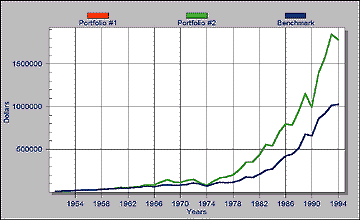Why do you consider the S&P 500 a simple index?" I wanted to understand why certain stocks went up and why others went down. I went looking for literature that would explain what I could see happening in the marketplace. I found that a lot of the available material was anecdotal. Where was the scientific methodology to support the claims? I was surprised that there wasn't much of that type of research available. -- James O'Shaughnessy
"Because it is. Just to show you how simple the S&P is, it can be replicated with a single factor: market capitalization. If you were to screen based on market capitalization and you buy every stock in the S&P Compustat database with a market cap greater than the mean -- generally, the upper 16% of the database by market cap -- then that portfolio performs identically to the S&P 500. For large-cap stocks, between 1952 and 1994, $10,000 invested in that portfolio turns into $1,042,859 with a standard deviation of 16.18%, compounded at an 11.41% annual rate. In contrast, the S&P 500 had a return of 11.38%, turning $10,000 into $1,027,828 with a portfolio volatility of 16.56%. "

